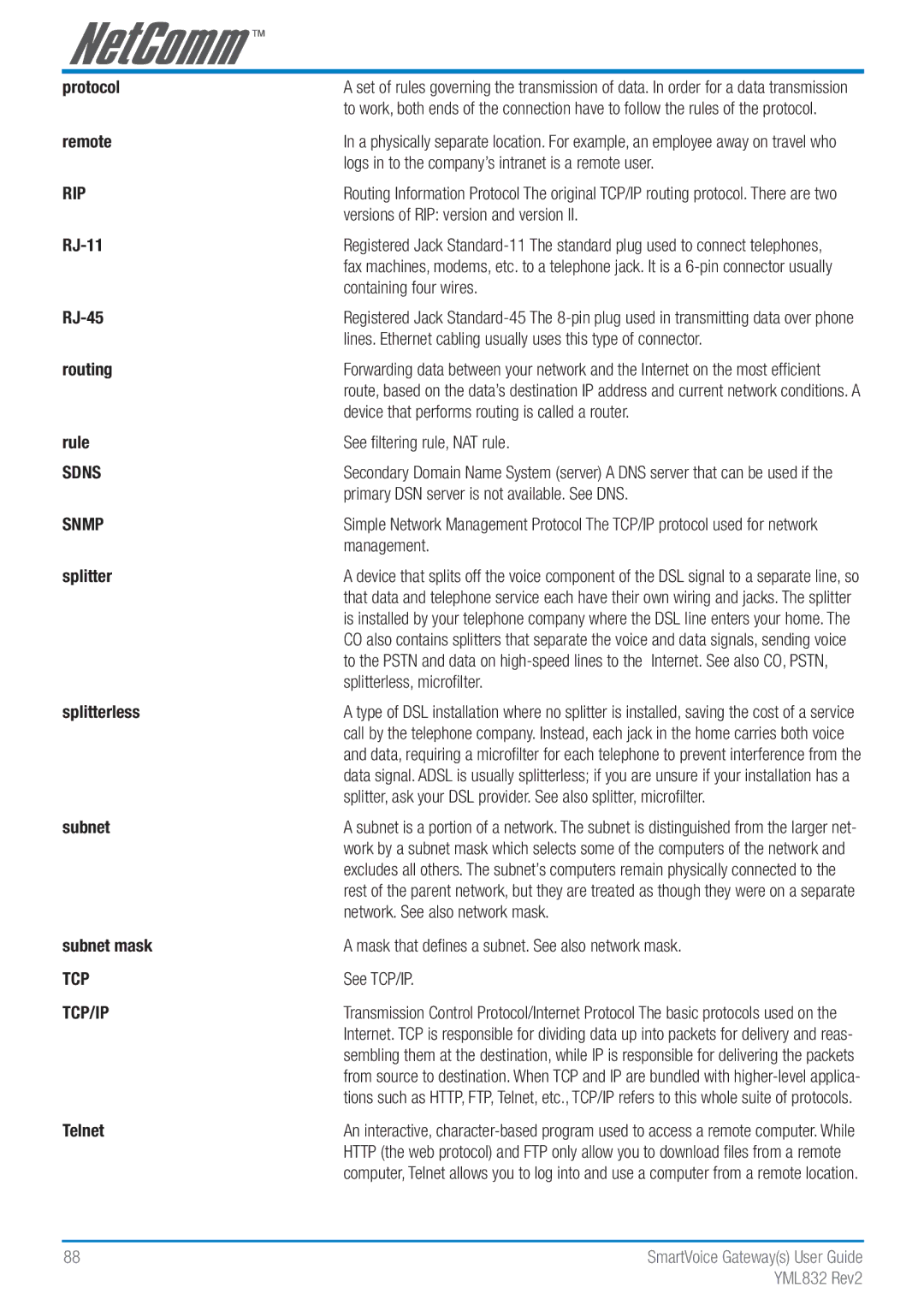protocol | A set of rules governing the transmission of data. In order for a data transmission |
| to work, both ends of the connection have to follow the rules of the protocol. |
remote | In a physically separate location. For example, an employee away on travel who |
| logs in to the company’s intranet is a remote user. |
RIP | Routing Information Protocol The original TCP/IP routing protocol. There are two |
| versions of RIP: version and version II. |
| Registered Jack |
| fax machines, modems, etc. to a telephone jack. It is a |
| containing four wires. |
| Registered Jack |
| lines. Ethernet cabling usually uses this type of connector. |
routing | Forwarding data between your network and the Internet on the most efficient |
| route, based on the data’s destination IP address and current network conditions. A |
| device that performs routing is called a router. |
rule | See filtering rule, NAT rule. |
SDNS | Secondary Domain Name System (server) A DNS server that can be used if the |
| primary DSN server is not available. See DNS. |
SNMP | Simple Network Management Protocol The TCP/IP protocol used for network |
| management. |
splitter | A device that splits off the voice component of the DSL signal to a separate line, so |
| that data and telephone service each have their own wiring and jacks. The splitter |
| is installed by your telephone company where the DSL line enters your home. The |
| CO also contains splitters that separate the voice and data signals, sending voice |
| to the PSTN and data on |
| splitterless, microfilter. |
splitterless | A type of DSL installation where no splitter is installed, saving the cost of a service |
| call by the telephone company. Instead, each jack in the home carries both voice |
| and data, requiring a microfilter for each telephone to prevent interference from the |
| data signal. ADSL is usually splitterless; if you are unsure if your installation has a |
| splitter, ask your DSL provider. See also splitter, microfilter. |
subnet | A subnet is a portion of a network. The subnet is distinguished from the larger net- |
| work by a subnet mask which selects some of the computers of the network and |
| excludes all others. The subnet’s computers remain physically connected to the |
| rest of the parent network, but they are treated as though they were on a separate |
| network. See also network mask. |
subnet mask | A mask that defines a subnet. See also network mask. |
TCP | See TCP/IP. |
TCP/IP | Transmission Control Protocol/Internet Protocol The basic protocols used on the |
| Internet. TCP is responsible for dividing data up into packets for delivery and reas- |
| sembling them at the destination, while IP is responsible for delivering the packets |
| from source to destination. When TCP and IP are bundled with |
| tions such as HTTP, FTP, Telnet, etc., TCP/IP refers to this whole suite of protocols. |
Telnet | An interactive, |
| HTTP (the web protocol) and FTP only allow you to download files from a remote |
| computer, Telnet allows you to log into and use a computer from a remote location. |
|
|
88 | SmartVoice Gateway(s) User Guide |
| YML832 Rev2 |
